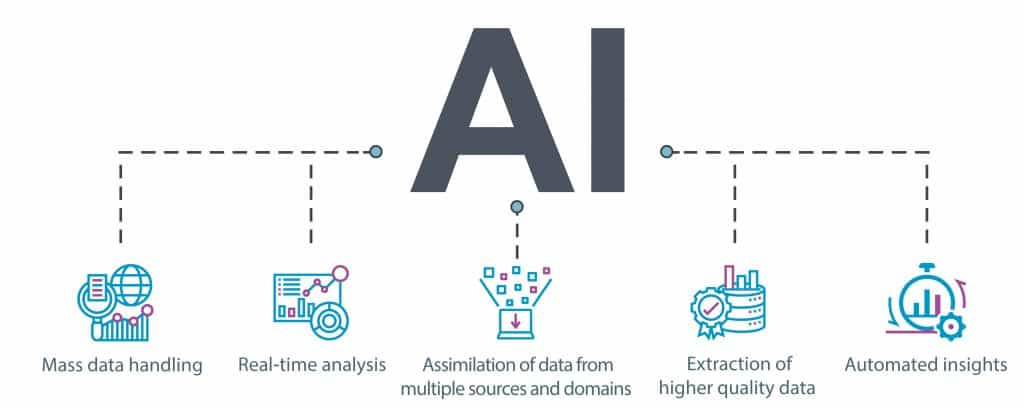As networks evolve, especially for 5G, operators understand how critical assurance is for ensuring the customer experience and troubleshooting. However, the same rich data analytics that open assurance provides can also be leveraged for other use cases. Operators have access to a sea of information like never before. By using the right tools and APIs, data can be extracted, and insights gleaned from that sea of data for additional use cases, like drawing out gold from a mine.
In fact, not only has data been coined the new gold, it’s also been called the new oil of the digital age. Why? By extracting the right insights from the data, this can lead to revenue, as well as making your network operations smoother and more efficient. By embracing this approach operators can make data-driven decisions that enhance the business. This is especially true when it comes to new revenue generators as well as reducing costs, which only become clear when you have data that enables you to bring about changes and deliver tangible effects on CAPEX and OPEX.
In terms of cost reduction, having an automated assurance solution gives operators an objective view of their networks, provides insights into degradations and rapidly resolves issues before they affect subscribers. The solution also acts as a supporting tool for 5G SA deployment decisions such as evaluating network equipment performance and quality. Other cost saving enhancements include Core optimization and RAN optimization for things like radio coverage.
When adding a built in AI/ML component to automated assurance, the abilities for operators broaden and deepen significantly. AI enables saving the human time required in handling data sets, anomaly detection, predictive and prescriptive customer experience analytics, and allows operators to take a more proactive rather than reactive approach to network operations.
This allows operators to provide superior customer services for the end user, thereby reducing customer churn in a more automated way. The same AI components can also enhance the insights for generating new revenue.
While reducing costs can be great for operators, by finding a way to actively use the data, they can open up numerous use case possibilities to increase revenues. In this blog, we will focus on monetization, not as a use case currently implemented by all operators, but 5G is creating more opportunities and ways to do that.
Assurance can help monetization, but what is monetized data used for?
Having looked at some of the general advantages of automated assurance, how can it help operators to monetize data in particular? With so much data flowing through the network arteries at high speed, having a way to gather, segment and analyze, operators will be able to create new revenue streams. For example, for marketing and sales, operators can use such information to better improve their own offerings and subscriber plans through area profiling, user profiling and subscribers’ geo-dynamics such as geolocation.
In terms of gaining access to the right data that companies might want, this could be an operational challenge where an assurance solution that gathers, organizes, and analyzes data at scale helps.
Once the relevant data has been acquired, monetization can be applied to many use cases for subscribers, third-party companies as well as operators. By using AI to analyze trends and patterns, the ability to track movement can inform where to build infrastructure, shops, traffic considerations, and more.
In principle, AI enhances:
- mass data handling capabilities
- real-time analysis
- assimilation of data from multiple sources and different domains
- extraction of more precise and better-quality data
- automated insights going beyond what regular assurance solutions can provide
This means AI-driven assurance is uniquely suited to enable data monetization. In order to monetize data effectively, these core capabilities are required.

Some examples of key sectors that could be targeted for data monetization are:
- Operator infrastructure – by knowing the level of connectivity in and around the city, operators will be able to see where more antennas and infrastructure are needed for your customers. Improving this at the subscriber’s place of work allows them to benefit from better service quality.
- City planning I.e., transportation – with the rise of smart cities, operators can especially use data in the automotive industry.
- Going forward, as the use of V2V, V2I and V2X technology gains momentum, having access to user data will help communication between vehicles, infrastructure, and general devices.
-
- This can dramatically improve the role of technology in safety to the benefit of the subscribers as well.
- Data can also be used to help governments and local authorities in their public transportation planning and help reduce traffic.
- Advertising – another option open to operators is to share anonymized and aggregated data that they accumulate to third parties for advertising purposes. Of course, this needs to be done within the rules and regulations concerning data privacy, but it can be another stream of revenue for operators.
-
- Based on user density, operators can deliver insights to commercial clients enabling them to know where to open branches of stores, offer promotions and provide other services.
-
- This also benefits the subscribers, as they are getting a better and more tailored customer experience, such as targeted ads that are relevant to them specifically based on previous search data.
- Consumer behavior – understanding device usage trends is not only great for developing public services, but it can allow services and products to be created and improved, that potential customers would want.
-
- User profiling could be applied to various sectors such as insurance, health, credit services and others.
- Data from device usage patterns such as home use, work use, points of interest, gender, age, mobility, life cycle as well as OTT players I.e., understanding where, when, and how much Netflix/Meta/Hulu etc. is consumed.
- Tourist and travel information – based on roamer analytics, population density analysis, mobility analysis and additional tourist behavior pattern profiling. The end-user will be able to benefit from better offerings and experiences with more tailored information being offered to them.
- Real time mass crowd handling – dynamic management for mass event producers, emergency-first responders, municipalities etc., benefits public safety.
- IoT application enablement (AEP) and management platforms (I.e., customer data platform, CDP) – enable businesses that have thousands or millions of subscriptions to manage their own resources and subscriptions’, performance. Better management capabilities translate into better user experiences which reduce subscriber churn.

What is the business value of data monetization?
Knowing how data can be used for various benefits both to the operator as well as to end users, understanding some of the wider business value as well as some of the challenges surrounding data monetization is important for the operator.
One key challenge for operators, as well as the companies that may end up using the data, is how to treat data privacy. They need to make sure they are in line with the current regulations. This can be done by using advanced anonymization methods, aggregations, and data modeling. Another challenge, as mentioned, is gathering reliable data and being able to handle the large amount that would come from a lot of different sources. The advantage of gathering a lot of data that could be useful to third party companies is that it could help forge new business relationships and expand growth in new directions.
Assurance solutions such as RADCOM ACE can provide operators with the capabilities to reduce costs, increase revenues and help provide better user experiences. Not only this, but with our strong AI solution in place, (RADCOM AIM), operators can automatically find the gold nuggets in the sea of data to take advantage of the great opportunities detailed above.
For more information on how you can monetize your data, feel free to contact us at [email protected], and we will be happy to assist you.
This blog was published as part of Light Reading’s Partner Perspective series

